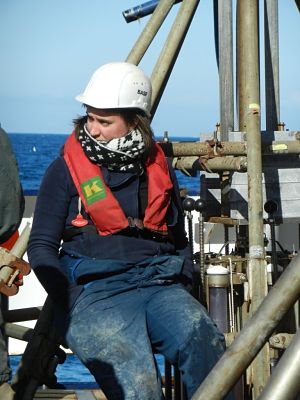Fieldwork in the Antarctic Peninsula

From 18 January till 18 March 2013, Freija Hauquier, PhD student at the Marine Biology Section of Ghent University, participated in an international research campaign to the Antarctic Peninsula.
The overall objective was to gather samples in the Larsen A/B/C area at the eastern side of the Peninsula where large parts of the original ice shelves calved off in the past two decades as a consequence of recent regional warming. Freija spent two months onboard the German icebreaker FS Polarstern, operated by the Alfred Wegener Institute for Marine and Polar Research in Bremerhaven. Together with 50 scientists and the captain and crew of Polarstern, they sailed from Punta Arenas in Chile to the Peninsula. Upon their arrival, however, they had to conclude that reaching the Larsen area, hence the sampling objective, was not feasible due to heavy seasonal sea-ice conditions. As an alternative a new integrative concept was developed onboard the vessel with all participating institutes. With the collaboration of the oceanographers, a series of sampling sites in regions with different water mass influences east and west of the Peninsula were selected. From the ice in the Weddell Sea, to the island surroundings in the Bransfield Strait and the open waters of the Drake Passage, a gradient in surface productivity could be observed as well as differences in continental shelf topography and fauna.
While most biologists gathered around the big Agassiz trawl for the collection of larger animals such as holothurians, starfish and sponges, Freija and her colleague Gritta Veit-Köhler from Senckenberg Institute in Wilhelmshaven were interested in the smallest animals living in the seafloor, the nematodes and copepods. Together with the sailors they spent several hours working on deck with a multicorer device to haul sediment cores in which their small objects of interest flourish.
Boxes with samples are on their way to the respective labs as we speak and will arrive soon to be analysed to get an idea on the relationship between surface productivity, water mass characteristics and benthic faunal communities. In the meantime, all participants are left with a new set of impressions of one of the world’s most astonishing places… icy landscapes, stormy waters, amazing wildlife and new friendships and collaborations are just some of the memories to cherish.
